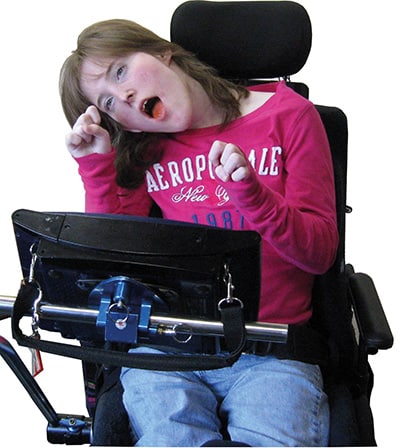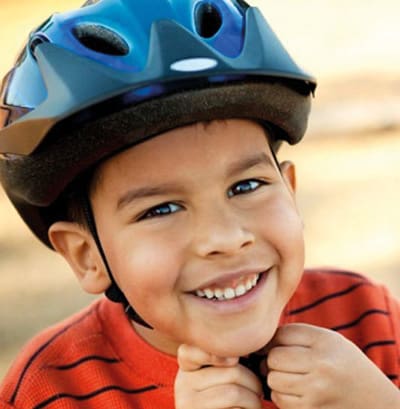Let’s get it clear: Look Ear, I’ve got eyes at the back of my head

Spatial awareness is vital for our ability to conduct our daily activities accurately and safely. In this article, we look at the various inputs we use to assess where we are in space and pay specific attention to the role our ears play and what we need to do to facilitate this.
We create much of our gross spatial awareness capabilities in the first couple of years of life as we learn to crawl and then move onto walking – this is why offering powered mobility to physically impaired youngsters is so important. Along the way, we are learning how far do we need to move to bump into something or to reach something? From there on, it’s a matter of fine-tuning this awareness – but what are the tools that the body has to achieve this and where does the fine-tuning happen?
The toolkit is a combination of a number of senses and our nervous system assessing and processing these inputs to lead to appropriate actions. We do not rely on only one of these senses, but on a combination of them, and are therefore able to compensate to quite some extent if we do lose access to one of them.
Eyes

Visual input is important – we use horizontal and vertical clues, and develop an expectation of size and shape from these. Most of us have binocular vision and the slight variation between what the left and the right eye perceives gives us the ability to judge distances. However, to make best use of the visual inputs, we need to keep the head steady, the eyes ideally in a horizontal plane, and the object being viewed in the centre of gaze (Fig 1).
Thus, the seating set-up and the amount and type of head support are critical, especially for those with poor muscle control (Fig 2).
Joints
Apart from vision, what other senses help to give us input into our spatial awareness? Proprioceptive receptors
in our joints are important – these let us know where bits of our bodies are in space, even with our eyes closed. These allow us, with our eyes closed, still to be able to place a finger onto the end of our nose, for example.
Ears
The other area of our hidden senses is the ears. Inside our ears we have the semicircular canals. When the head moves, the fluid within the semicircular canals (which sit at right angles to each other) also moves. This fluid motion is detected by hair cells, which then send nerve impulses about the position of the head to the brain. This feeling of
where our head is in space helps our sense of balance, along with input from our feet, backside, etc.
The other important part of the ear is the flap on the outside – the pinna. The pinna collects sound waves and channels them into the ear canal (the external auditory meatus), where the sound is amplified. The sound waves then travel toward the flexible, oval membrane at the end of the ear canal: the eardrum, or tympanic membrane.

Look ear
But how do we know where the sound is coming from? How can we see with our ears? Part of this is achieved by our ears being separated by the width of our heads, so sounds from one side take longer to reach one ear than the other (in a way, paralleling the benefits of binocular vision in the form of binaural hearing).
But if I click my fingers a metre in front of you or a metre behind you, how do you tell which it is, since the soundwave is travelling the same distance to each ear? The answer lies in all the crinkles in the pinna: these add minor distortions to the sound waves as they reach the ear and the crinkles are different shapes to the sound waves if hit from behind than from in front. Early on in life, we learn what the distortions tell us about the direction a sound has come from.
So, for their safety and for their full spatial awareness, if you are putting head protection on a person, please ensure that the ears are not covered up and the pinnae are available to flap freely (Fig 3). This is as important for youngsters learning to fine-tune their spatial awareness as it is to the elderly population with dementia and confusion. For the ages in between, whether say skiing or cycling, leave the ears free to bring in the auditory clues and keep the head still and level so that finer motor control of other parts of the body can be achieved.
If you are providing a head support to keep the head steady, and positioned to optimise the visual field, make sure the individual has a properly positioned and tightened pelvic positioning belt and appropriate trunk anterior supports.

Further items can be found at www.beshealthcare.net. If you are interested in receiving further information on the topic, please contact barend@beshealthcare.net.
Dr Barend ter Haar has been involved in seating and mobility for over 30 years, including lecturing internationally and developing international seating standards.
Click to read more from the ‘Let’s get it clear’ series from Dr Barend ter Haar
https://thiis.co.uk/lets-get-it-clear-look-ear-ive-got-eyes-at-the-back-of-my-head/https://thiis.co.uk/wp-content/uploads/2021/10/i2i-1212.jpghttps://thiis.co.uk/wp-content/uploads/2021/10/i2i-1212-150x150.jpgAnalysis & InsightsLet's Get It ClearNewsroomBES Healthcare,Dr Barend ter Haar,Let's get it clear,proprioception,spatial awarenessSpatial awareness is vital for our ability to conduct our daily activities accurately and safely. In this article, we look at the various inputs we use to assess where we are in space and pay specific attention to the role our ears play and what we need to do...Sarah SarsbySarah Sarsbysarah@thiis.co.ukEditorTHIIS Magazine

